Cochineal
This project was a special undertaking by my friend, Jennifer Murray (RISD Painting '15), and myself.
Jennifer had grand ambitions to combine 3 class projects into one performance piece. She asked if I would be interested in participating in the show, and after seeing how much work was needed to accomplish this feat, along with my poorly tempered enthusiasm for the project, I was welcomed on board the project. I offered my sewing knowledge to help create the suit structure pattern, and crafted the metal adornments for each character. Jennifer, with all studio time dedicated to this project, was able to construct a hoop skirt, create several different silk screen prints, print on the garments, and sew the skirt and suit. In the span of roughly a month, Jennifer's vision was coming true, and I was lucky to be a part of it. We managed to perform the act twice in front of a live audience, and directed a photo shoot to best portray the themes and mood which we wanted to convey.
In the performance, Jennifer plays the insect-like devotee, come to worship the veiled deity, ultimately sacrificing herself for the sake of her ritual. Only after this character lies itself to rest, does my character, the "Queen Mother", react to her subject and provide the guidance that has been sought after.
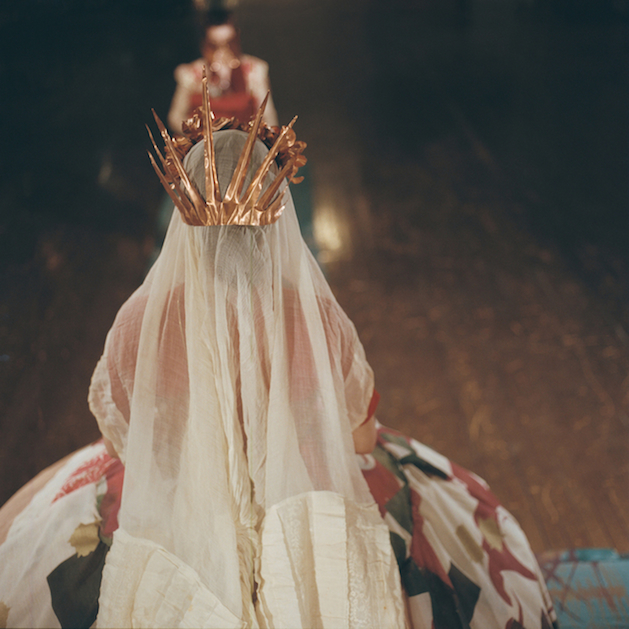
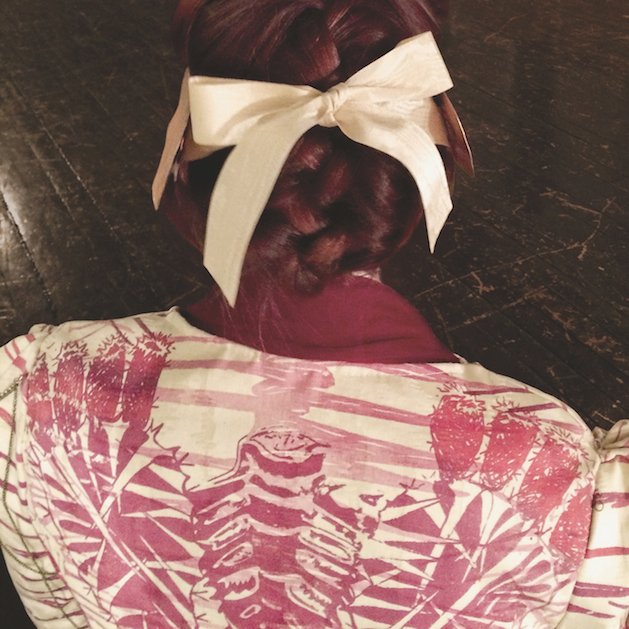
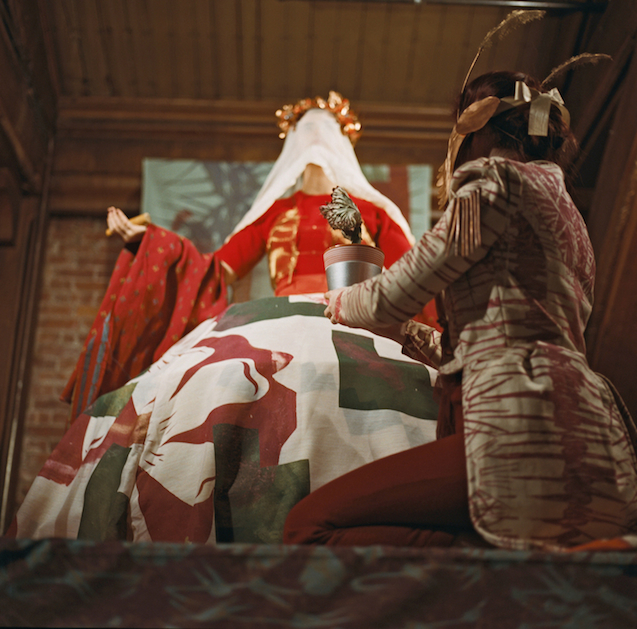
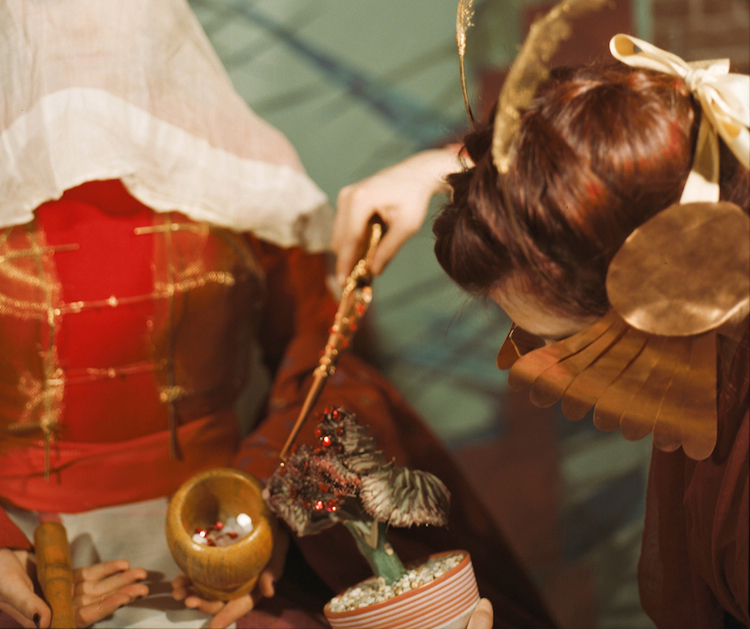
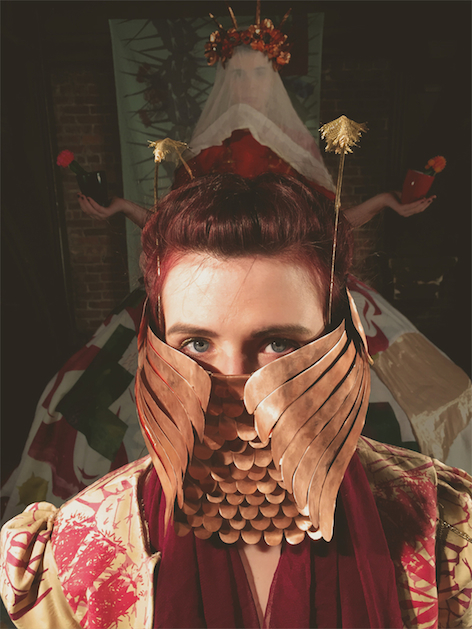


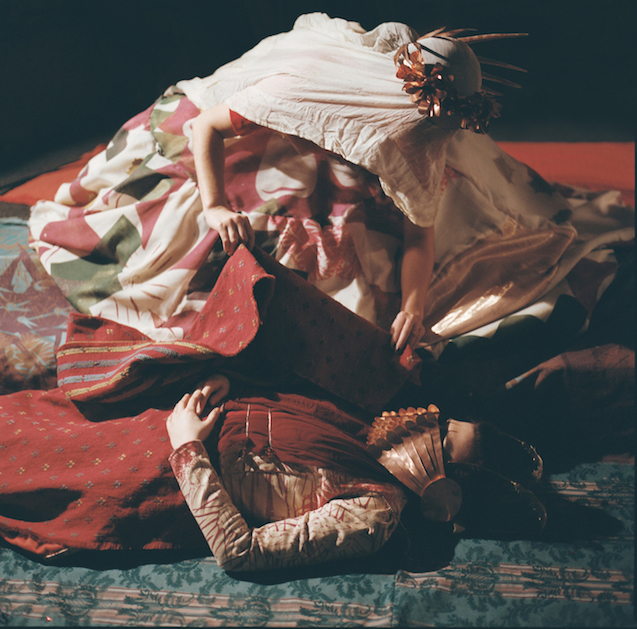
The stylization, colors, and motifs were referenced from the Colonization era in Peru by the Spanish. In the 1500s, Conquistadors traveled across the globe to bring back treasures for their homeland. The Fountain of Youth and legendary gold cities were rumored to be hidden within these unknown territories, and thus the expeditions began. Though there was no Fountain of Youth to be found, bountiful resources were exploited and exported from what is now South America, one being the Cochineal beetle. This tiny insect is barely larger than a corn kernel, but the females cluster together on the Opuntia cactus (prickly pear cactus) and cement their bodies to the plant. When this beetle is smashed, a most potent and vibrant red is found, now conveniently known as cochineal red.
These minuscule beetles were shipped out in droves, the red that the Cochineal created so lush and admired that Europe proclaimed it the color of royalty. Red was reserved for those who could afford fabrics and fibers that were dyed with the Cochineal. There was a limited supply of course, due to the small nature of the source material, but Britain's Army was monikered as "Redcoats" for the use of this pigment.
Exploration over seas is what finally linked the land masses of Earth that were separated by the Pacific and Atlantic oceans. When Europeans landed in "the Americas" humanity's path was forever altered, and civilizations could never go back to what it had been before this.
Photos credited to Gloria Duan (RISD Painting '15) with a Hasselblad camera
